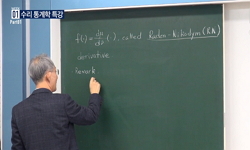A collision-avoidance algorithm is complete when it is guaranteed to find a collision-free path if there exists one. Completeness of the free arc method in [1] is analyzed and is partly guaranteed using the backward motion. The performance of the algo...
http://chineseinput.net/에서 pinyin(병음)방식으로 중국어를 변환할 수 있습니다.
변환된 중국어를 복사하여 사용하시면 됩니다.
- 中文 을 입력하시려면 zhongwen을 입력하시고 space를누르시면됩니다.
- 北京 을 입력하시려면 beijing을 입력하시고 space를 누르시면 됩니다.
2차원 형상 공간에서의 프리아크 방법의 성능 분석 = Performance Analysis of Free Arc Method in 2-Dimensional Configuration Space
한글로보기부가정보
다국어 초록 (Multilingual Abstract)
A collision-avoidance algorithm is complete when it is guaranteed to find a collision-free path if there exists one. Completeness of the free arc method in [1] is analyzed and is partly guaranteed using the backward motion. The performance of the algorithm is evaluated based on computation time required for constructing obstacles and searching for a collision-free path. Computational complexity of our approach is analyzed theoretically and practical computation time is compared with that of the other method. Simulation results for two SCARA type robot manipulators are presented to verify the efficacy of the proposed method.
목차 (Table of Contents)
- Ⅰ. 서론
- Ⅱ. 프리아크 방법의 성능 분석
- Ⅲ. 모의실험 결과 및 토의
- Ⅳ. 결론
- Ⅰ. 서론
- Ⅱ. 프리아크 방법의 성능 분석
- Ⅲ. 모의실험 결과 및 토의
- Ⅳ. 결론
동일학술지(권/호) 다른 논문
-
- 우송대학교 부설 산업연구원
- 김성철
- 2002
-
전사적 문서관리 시스템의 설계 및 구축 방안에 관한 연구
- 우송대학교 부설 산업연구원
- 이창조
- 2002
-
상업용 DBMS를 이용한 능동 데이터베이스 구현에 관한 연구
- 우송대학교 부설 산업연구원
- 이동우
- 2002
-
IT전공학과 졸업생의 SI(시스템통합)전문기업 취업진출을 위한 커리큘럼의 최적화 모듈 및 경력관리(CDP) 모델설계에 관한 연구
- 우송대학교 부설 산업연구원
- 문철
- 2002




 RISS
RISS


